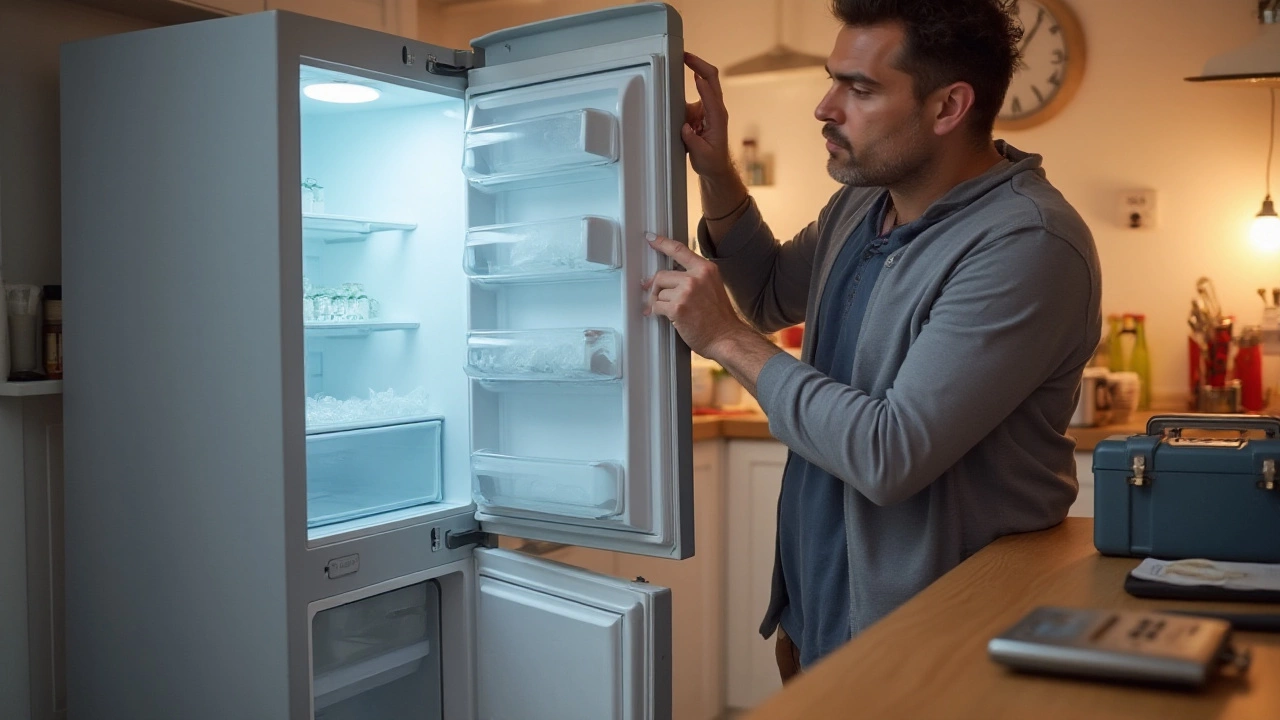Ice Not Forming in Your Freezer? Simple Steps to Get It Working Again
First thing’s first – you notice the freezer is running but no ice is appearing in the ice tray. It’s frustrating, but most problems are easy to spot. Let’s walk through the basics so you can decide if a quick fix will do or if it’s time to call an expert.
Common Reasons Your Ice Won’t Form
1. Thermostat set too warm. Many people think a colder setting means faster ice, but if the temperature is above 0°F (‑18°C) the tray won’t freeze. Turn the dial a few clicks colder and give it an hour.
2. Blocked water line. The water valve that fills the tray can get clogged with mineral deposits. Pull the freezer out, locate the line (usually behind the panel), and check for kinks or buildup. A gentle soak in white vinegar can clear it.
3. Faulty ice maker switch. Some models have a metal arm that tells the machine when the tray is full. If it’s stuck up, the freezer thinks there’s already ice. Make sure the arm moves freely.
4. Door seal issues. A leaky seal lets warm air in, raising the internal temperature. Run a finger along the gasket; if you feel air or see cracks, replace the seal.
5. Defrost timer or heater problems. Modern freezers cycle through a defrost phase. If the timer fails, the freezer may stay in defrost mode, keeping the ice tray too warm. Listening for a click every few hours can help you spot this.
When to Call a Professional
If you’ve checked the thermostat, water line, and door seal and still see no ice, it’s likely an electrical or control‑board issue. Trying to tinker with the compressor or wiring yourself can be risky, especially with refrigerant involved.
South Shields Appliance Repair Services has certified technicians who know how to test the defrost timer, replace faulty ice‑maker modules, and handle refrigerant safely. A quick call can save you from a costly mistake and get the freezer back to full speed.
Before you dial, gather the model number (usually on a sticker inside the freezer) and note any error codes flashing on the display. That info speeds up the diagnosis and often lowers the call‑out fee.
While you wait for the pro, keep your food safe by using a cooler with ice packs. It’s a simple hack that buys you time and prevents spoilage.
Remember, regular maintenance—cleaning the coil, checking the seal, and flushing the water line—keeps ice making smooth and avoids surprise breakdowns. A few minutes each month can extend the life of your freezer and keep the ice flowing.
Got ice not forming? Start with these checks, and if the problem sticks, let a local expert handle the heavy lifting. Your freezer will be back to churning out ice cubes in no time.
